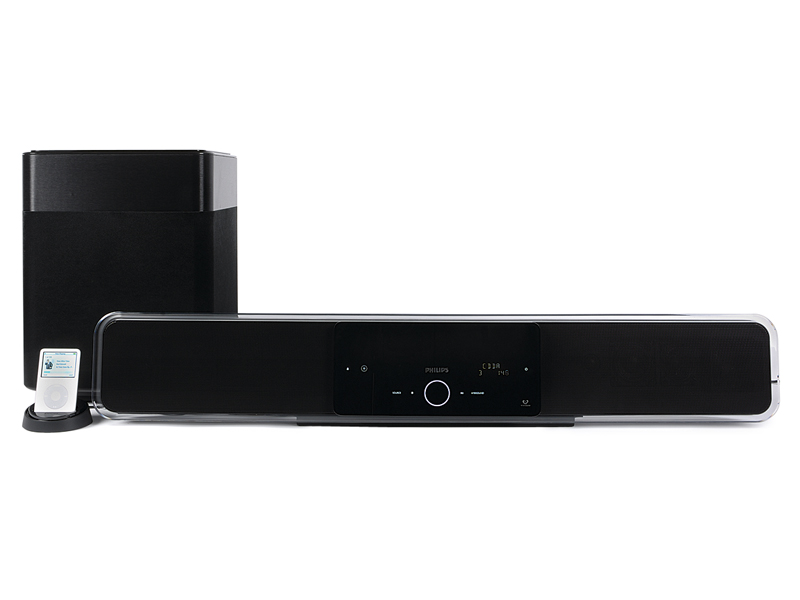TechRadar Verdict
Looks great, does a good job of bring basic home cinema to your living room, but pros best steer clear
Pros
- +
Clear picture
- +
Very practical form factor
- +
Genuine surround FX
Cons
- -
Slightly disjointed bass channel
- -
Sounds compressed in surround modes
Why you can trust TechRadar
The Philips HTS8140 SoundBar is a seductive choice for anyone with a small apartment and an eye for style.
It combines all of the speakers and electronics you need for a home cinema inside one package that can be mounted on the wall beneath your flatscreen TV – an equally smart subwoofer takes care of bass and messy cabling.
With a DVD player on board and virtual 5.1 surround sound, it's certainly the least conspicuous way of sneaking a home cinema into the front room.
Sleek speaker
This Philips package could almost trade on its looks alone.
I was impressed by its predecessor, the HTS8100, but this refined product looks even nicer, with a crisp white LED display, elegant curves and clean lines. It's styled to match the brand's own 42in flatpanel TV, but it'll look great underneath any screen.
Even the big woofer has sex appeal, and it cleverly manages the AV cables so that just a single umbilical lead conveys audio and power between itself and the main unit.
iPod dock
The HTS8140 has an iPod dock thrown in, giving you convenient access to your MP3 collection via the
onscreen graphics and the handsome Philips remote control.
A USB slot grants access to storage devices; it can read almost any audio and video files, including DivX. The system is a doddle to use. One cable runs to the subwoofer, which in turn plugs into the mains, while an HDMI cable runs to the TV.
Tap the glass panel at the centre and it springs into life. Tap the eject button and the panel glides open to reveal the DVD player.
Bold pictures
Selecting video preferences is easy, and an onscreen wizard helps you set the Ambisound levels to best suit your room. This is an important step that shouldn't be skipped.
From the picture quality, it's immediately apparent that this is a quality DVD player. Either on 576p
or 1080p, the image from my Iron Man reference platter looks bold and clear with good contrast.
Sonically, though, the results are much more mixed.
Ambisound illusion
The SoundBar uses a virtual surround algorithm to create the illusion of being encircled by speakers. But like David Blaine, it's only partially convincing.
The first-gen HTS8100 made a brave stab at distributing effects, but ultimately it failed; this time the DSP has been improved and the Ambisound mode really does create wraparound FX, at least with some material. In fact, the first time you hear Ambisound you'll definitely be impressed.
However, it's still far from natural, and the heavily-processed sound grates when you turn the volume up. Keep to a moderate level and you'll better appreciate its detailed tone and delicate bass. The unit suits dialogue and music, but it can sound a bit harsh with explosions – specifically when Tony Stark first dons his Iron Man outfit.
I'd rate the Philips SoundBar as a technically fine product with admirable design, build and features. It does its main job of improving on your TV's output, but ultimately it doesn't really cut it in home cinema enthusiast circles.

Jim has been evaluating printers for more than twenty years and has, to date, written over a hundred reviews for TechRadar Pro. From pocket printers to industrial dye sublimation, Jim has been there, run the tests and printed the t-shirt. His expertise extends to consumables (paper, ink, toner) and his printer buying guides make it easy to compare these essential peripherals.
